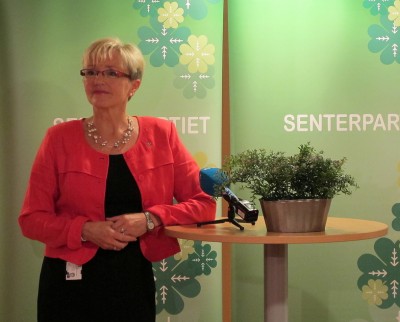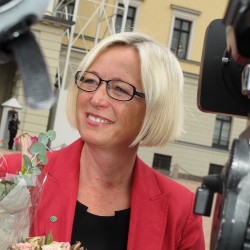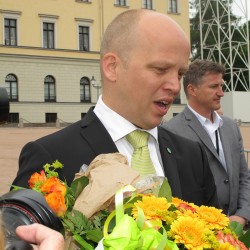NEWS ANALYSIS: This week’s ministerial changes in Norway’s left-center coalition government are another sign of near-crisis within one of the coalition’s two small parties (Senterpartiet, Sp). It also shows how the country’s small political parties in general are struggling to remain in position, and in opposition.

A series of recent public opinion polls has shown how the small parties have lost voter favour and, in turn, significance. Perhaps voters sense that the small parties often have held a disproportionate amount of power over the years, as parties with less than 5 percent of the vote end up holding important ministerial posts in coalition governments. One thing is clear: The trend spells trouble for the current government’s three-party coalition.
Monday’s two ministerial changes, both affecting ministerial posts held by the struggling Sp, were billed as “renewal” by party officials themselves. Others viewed them as a desperate attempt by Sp to boost its sagging support among voters, especially within the rural areas where Sp’s core constituents live.
Both of the coalition’s two small parties, Sp and the Socialist Left (SV), have fallen recently under the critical level of voter support needed for representation in Parliament and certainly in a government. Their loss of voter support raises serious concern for the coalition’s dominant Labour Party, so Labour Prime Minister Jens Stoltenberg seemed more than willing to present some “renewal” on behalf of his partners on Monday.

SV is now a shadow of its former self, claiming just 3.6 percent of the vote in the most recent poll conducted last week by research firm Respons for newspaper Aftenposten. That’s well below the 4 percent needed for representation in Parliament, even after SV made ministerial changes of its own in March.
Sp, meanwhile, logged just 3.5 percent of the vote in a poll conducted a week earlier for Norwegian Broadcasting (NRK). The situation was especially worrisome for Sp and its government partners because of trends in Hedmark and Oppland, two rural counties that have sent Sp politicians to parliament in every election since World War II. Now even Sp’s support in such core areas is seriously threatened.
Its poll numbers looked better in Aftenposten’s poll, where it showed support from 4.7 percent of the voters, slightly higher than Aftenposten’s poll in May. The situation remains precarious, though, with national elections looming in just over a year.
Much of the drop in Sp’s support is blamed on the farmers’ angry reaction to the coalition government’s subsidy offer this spring. The farmers got far less subsidy support than they’d demanded and seemed to feel betrayed with their “own” party, Sp, in government power. Some of the voters are thus believed to be flocking over to the Christian Democrats party, even the Conservatives, although they’re hardly likely to get a better deal if a Conservative coalition takes over for the current Labour-led left-center coalition next fall.

Some polls have shown a clear majority just for the Conservatives (Høyre) and the Progress Party (Fremskrittspartiet, Frp), meaning that if they ultimately team up, they wouldn’t need to bother courting any of the small parties to form a government. Labour, meanwhile, has tumbled in almost all the recent polls, either a side-effect of voter disenchantment with their small partners or a sign of sheer voter fatigue after seven years with the current coalition in power.
That’s left some opposition politicians wondering whether Labour will make some ministerial changes itself. Stoltenberg replaced Justice Minister Knut Storberget with Grete Faremo in November, moving her over from the defense ministry post, but that was largely because Storberget had asked to be relieved of his duties and had only stayed on to help handle the aftermath of last summer’s terrorist attacks. Otherwise Stoltenberg has kept his team of Labour ministers largely intact.
The polls vary greatly, with Aftenposten’s showing Frp with just 11.7 percent of the vote and another conducted for newspapers Nationen and Klassekampen showing Frp with 18.9 percent. The Conservatives risen to as high as 35.1 percent. Voters are notoriously fickle as well. Stoltenberg had been riding a wave of popularity and respect over his handling of the terrorist attacks. It has perhaps crested, but he’ll surely try to get back on top over the next several months.
It’s likely everyone, not just Norway’s politicians but Norwegian voters as well, simply need a vacation. Many may be tired and cranky after a year of terror, strikes and other woes. SV, Sp and Labour are all struggling to renew themselves, with the hopes of making a comeback after the summer holidays, when the 2013 election campaign will unofficially begin.
Views and News from Norway/Nina Berglund
Please support our news service. Readers in Norway can use our donor account. Our international readers can click on our “Donate” button:

